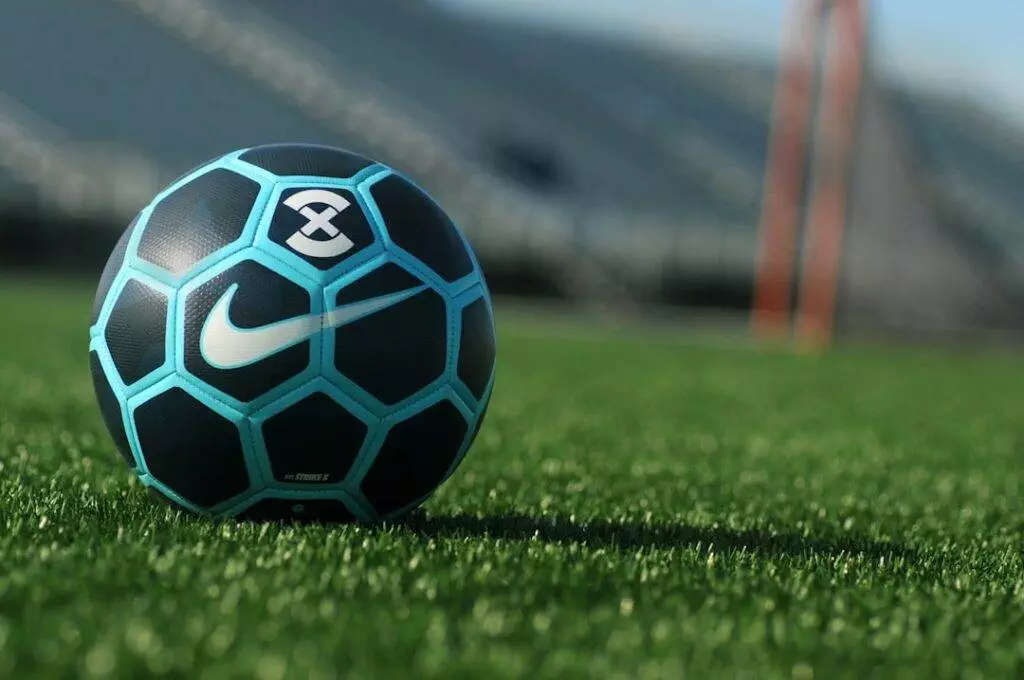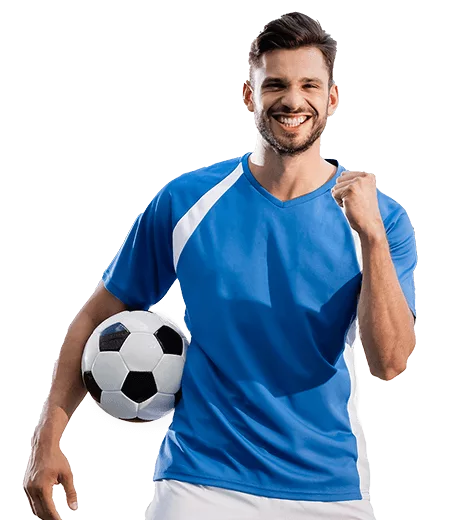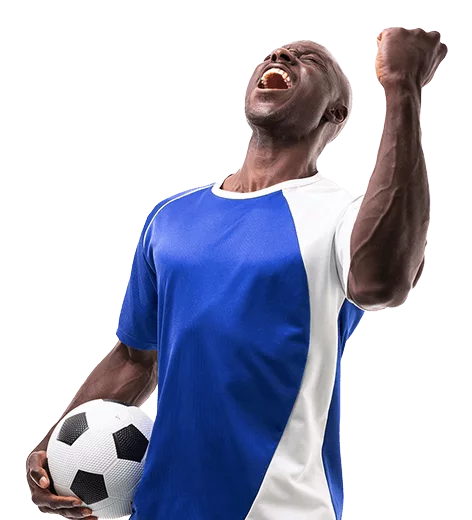Goalkeepers play a crucial role, often being the last line of defense against opposing teams’ attacks, and 1v1 goalkeeping is a crucial skill that every goalkeeper must master. It refers to the ability to defend the goal against an attacking player one-on-one. Mastering 1v1 goalkeeping requires technical skills, mental toughness, and strategic decision-making.
The importance of mastering 1v1 goalkeeping cannot be overstated. A single 1v1 situation can make or break a game. If the goalkeeper successfully saves the shot, it can boost the entire team’s confidence and potentially turn the game’s tide. On the other hand, if the goalkeeper fails to make the save, it can demoralize the team and give the opposing team a significant advantage.
Understanding the Importance of 1v1 Situations
1v1 situations can be game-changers because they often occur in critical moments of a match. Whether it’s a breakaway or a well-executed through ball, the goalkeeper must stay focused and confident. The ability to make crucial saves in 1v1 situations can be the difference between winning and losing.
Staying focused is essential in 1v1 situations because any lapse in concentration can result in a goal for the opposing team. Goalkeepers need to maintain their composure and not get overwhelmed by the pressure of the situation. Confidence is also key in these situations, allowing goalkeepers to trust their instincts and make split-second decisions.
Essential Techniques for Mastering 1v1s
There are several techniques that goalkeepers can use to improve their performance in 1v1 situations. One technique is “narrowing the angle,” which involves moving toward the attacker to reduce the space they have to shoot at. By closing down the angle, goalkeepers make it more difficult for the attacker to find the back of the net.
Another technique is the “starfish” or “spread save.” This involves spreading the body out to cover as much of the goal as possible, making it harder for the attacker to find an opening. The starfish save is particularly effective when the attacker is close to the goal and has limited time to react.
Practicing these techniques regularly is crucial for mastering 1v1 goalkeeping. By repeating these movements and saves in training sessions, goalkeepers can develop muscle memory and improve their ability to execute them in game situations. It’s important to focus on both technique and decision-making, as knowing when to use each technique is just as important as knowing how to execute them.
Improving Your Footwork and Positioning
| Metrics | Description |
|---|---|
| Steps per minute | The number of steps taken in a minute while practicing footwork drills. |
| Accuracy percentage | The percentage of times the player can hit the target while practicing positioning drills. |
| Reaction time | The time it takes for the player to react to a stimulus while practicing footwork drills. |
| Distance covered | The total distance covered by the player while practicing footwork and positioning drills. |
| Time spent practicing | The amount of time the player spends practicing footwork and positioning drills. |
Footwork and positioning play a crucial role in 1v1 situations. Good footwork allows goalkeepers to quickly move laterally and close down angles, while proper positioning ensures they are in the right place at the right time. By improving their footwork and positioning, goalkeepers can increase their chances of making saves in 1v1 situations.
One way to improve footwork is through ladder drills. These drills involve moving quickly through a series of ladder rungs, which helps improve agility and coordination. Another way to improve footwork is through cone drills, where goalkeepers move around cones in different patterns to simulate game situations.
In terms of positioning, goalkeepers should aim to be able to see both the ball and the attacker. This allows them to anticipate the shot and react quickly. It’s also important for goalkeepers to be aware of their positioning relative to the goal, as being too far off the line can leave them vulnerable to shots that are placed close to the post.
Reading the Attacker’s Body Language
Reading the attacker’s body language is a valuable skill that can help goalkeepers in 1v1 situations. By observing the attacker’s movements and body positioning, goalkeepers can anticipate their next move and react accordingly. This can give goalkeepers a split-second advantage and increase their chances of making a save.
One aspect of reading body language is observing the attacker’s eyes. The direction in which the attacker is looking can provide clues about where they intend to shoot. For example, if the attacker is looking towards the far post, it suggests that they are likely to shoot in that direction.
Another aspect of reading body language is observing the attacker’s body positioning. If the attacker is leaning towards one side, it suggests that they are likely to shoot in that direction. Similarly, if the attacker is preparing to strike the ball with their left foot, it suggests they are likely to shoot towards the right side of the goal.
Anticipating the Shot and Making the Save

Anticipating the shot is a crucial skill for goalkeepers in 1v1 situations. By reading the attacker’s body language and positioning themselves accordingly, goalkeepers can increase their chances of making a save. Anticipation allows goalkeepers to react quickly and get into position before the shot is taken.
One way to improve anticipation is through visualization exercises. Goalkeepers can train their minds to react quickly in game situations by mentally rehearsing different scenarios and imagining themselves making saves. It’s also important for goalkeepers to trust their instincts and not second-guess themselves when making split-second decisions.
Making the save in 1v1 situations requires good technique and quick reflexes. Goalkeepers should focus on getting their bodies behind the ball and using their hands or feet to make the save. It’s important to stay balanced and not commit too early, as this can leave goalkeepers vulnerable to shots placed in the opposite direction.
Communicating with Your Defenders in 1v1 Situations
Communication with defenders is crucial in 1v1 situations. By effectively communicating with their defenders, goalkeepers can ensure they have the support they need to make saves. This can involve directing defenders to mark specific attackers or providing instructions on how to close down space.
One way to communicate effectively is through clear and concise verbal cues. Goalkeepers should use simple and direct commands that are easy for defenders to understand. It’s also important for goalkeepers to be assertive and confident in their communication, as this can inspire confidence in their defenders.
Non-verbal communication is also important in 1v1 situations. Goalkeepers can use hand signals or gestures to indicate where they want their defenders to position themselves. For example, raising an arm can signal a defender to step up and apply pressure on the attacker.
Developing Mental Toughness and Confidence
Mental toughness and confidence are essential qualities for goalkeepers in 1v1 situations. These qualities allow goalkeepers to stay focused and make split-second decisions under pressure. Developing mental toughness and confidence requires practice and a positive mindset.
One way to develop mental toughness is through visualization exercises. By mentally rehearsing different scenarios and imagining themselves making saves, goalkeepers can train their minds to stay calm and focused in high-pressure situations. It’s also important for goalkeepers to learn from their mistakes and not dwell on past failures.
Building confidence is also crucial for goalkeepers in 1v1 situations. One way to build confidence is through positive self-talk. Goalkeepers can boost their confidence and believe in their abilities by repeating positive affirmations and reminding themselves of their strengths.
Drills and Exercises for 1v1 Goalkeeping
Goalkeepers can use several drills and exercises to improve their 1v1 goalkeeping skills. One drill is the “shot-stopper” drill, where a coach or teammate takes shots on goal while the goalkeeper focuses on making saves in 1v1 situations. This drill helps goalkeepers practice their technique and decision-making under pressure.
Another drill is the “reaction save” drill, where the goalkeeper stands in the goal and reacts to shots from different angles. This drill helps goalkeepers improve their reflexes and quicken their reaction time.
Goalkeepers need to practice these drills regularly to improve their 1v1 goalkeeping skills. By incorporating these drills into training sessions, goalkeepers can develop the muscle memory and decision-making abilities needed to succeed in game situations.
Putting it All Together: Game Situations and Strategies
In-game situations, goalkeepers must apply their 1v1 goalkeeping skills effectively. This requires technical ability, mental toughness, and strategic decision-making. One strategy goalkeepers can use is to stay on their feet as long as possible, forcing the attacker to make the first move.
Another strategy is to use positioning to their advantage. By positioning themselves well and narrowing the angle, goalkeepers can make it more difficult for attackers to find the back of the net. It’s also important for goalkeepers to communicate with their defenders and provide instructions on how to close down space and mark attackers.
Mastering 1v1 goalkeeping is essential for every goalkeeper. The ability to make crucial saves in 1v1 situations can be the difference between winning and losing. By understanding the importance of 1v1 situations, practicing essential techniques, improving footwork and positioning, reading the attacker’s body language, anticipating the shot, communicating with defenders, developing mental toughness and confidence, and incorporating drills and exercises into training sessions, goalkeepers can improve their 1v1 goalkeeping skills and increase their chances of success in game situations. It’s important to practice regularly and stay confident in 1v1 situations, as this will ultimately lead to improved performance and success on the field.
If you want to enhance your skills as a goalkeeper and master the art of 1v1 techniques, then you don’t want to miss out on this insightful article from Kicka Football. This article dives deep into the strategies and tactics that goalkeepers can employ when facing a one-on-one situation with an opponent. This article covers everything from positioning and decision-making to communication and anticipation. To gain valuable insights and take your game to the next level, check out the article here.






